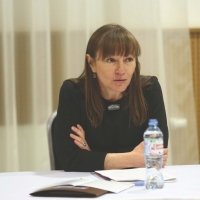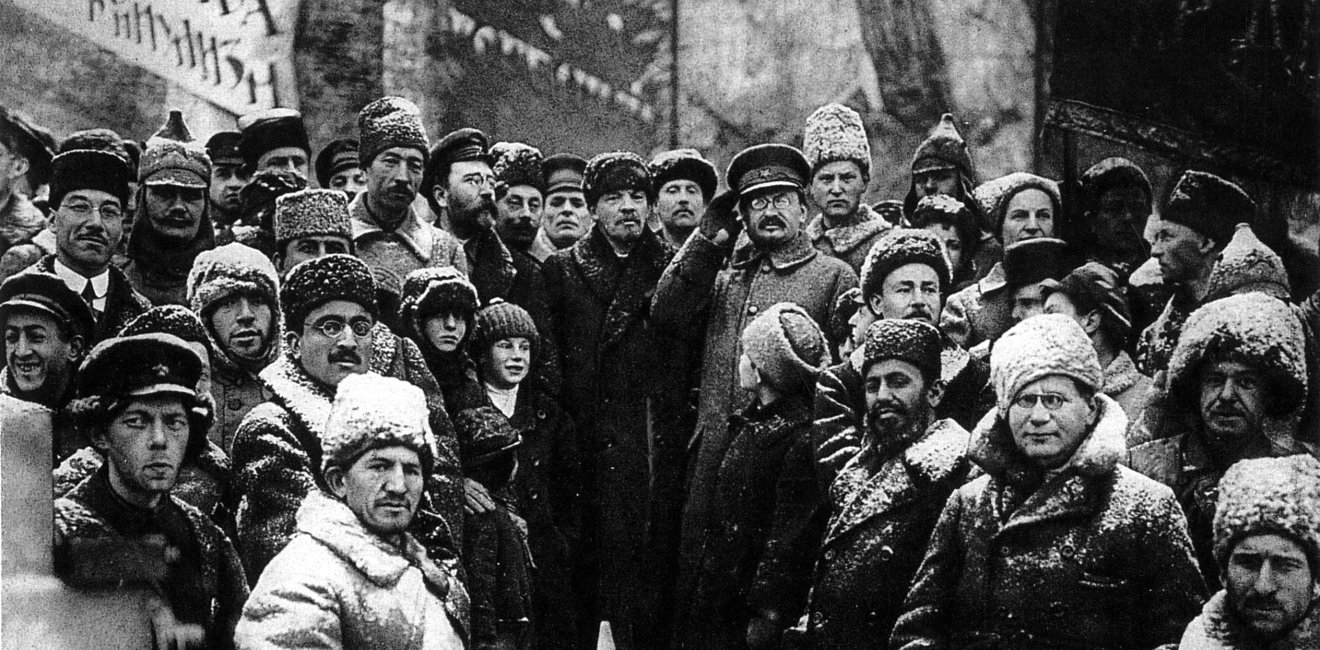
A blog of the Kennan Institute
The downgrading of the October 1917 revolution as a foundational event in the official narrative of modern Russia’s history is striking. The date has been quietly dropped from the calendar of official commemorative days. Yet the Kremlin’s revision of history, taking place without fanfare, does not entirely mask what may be the driving force: a fear of instability in society and among the political elite that could threaten the state. The long reach of the past appears to still be causing the Kremlin some anxiety.
The effects of the wholesale disruption associated with the October Revolution and the subsequent formation of the Soviet Union penetrated every part of Russian life. That and the slow pace of societal changes after the demise of the Soviet Union mean that visible signs of the Soviet past still abound in Russia. Place-names and street names across the country, to take just one example, serve as reminders of the Soviet legacy. In my native city of Tomsk, located in the heart of Siberia, 1,800 miles east of Moscow, the names of Lenin, Marx, Kirov, Rosa Luxemburg, the Red Army, and the Red Guard are still blazoned on street signs. The only notable change occurred in the early 1990s when the old name of Novosobornaya (New Cathedral) Square was restored to the Soviet-era Square of the Revolution. A large statue of Lenin erected on the square during Soviet times came down as well.
A deep connection to the past is still felt by many ordinary Russians, who were disappointed when they realized that the hundredth anniversary of the October Revolution of 1917 would not be officially commemorated. I remember overhearing a woman in her early sixties angrily threatening to vote against Vladimir Putin in the upcoming elections because he refused to celebrate the October Revolution. These feelings are receding, though slowly. About 15 percent of Russians planned to celebrate October Revolution day last year, whereas in 2006 the share was 23 percent, according to a November 2017 report by the Levada Center, an independent polling organization.
Though the Russian Federation is the formal successor to the Soviet Union and as such might be expected to continue certain honorific traditions, the centennial of the October Revolution was largely ignored by the Kremlin. More than that, President Putin chose to open a memorial to the victims of political repression in Moscow on October 30. The ceremony took place on the eve of two important dates in modern Russia’s history: November 4, National Unity day, which was introduced in 2004 and has become popular among nationalist and right-wing forces, and November 7, the day on which the “Great October” Revolution was celebrated right up to 1996 and is still celebrated by Russia’s communists.
The centennial year of the October Revolution demonstrated that the Kremlin is clearly and firmly rejecting the Soviet revolutionary legacy. Some experts maintain that Russia’s political elites are still uncertain how to think about the event, but it seems to me the year 2017 provided ample proof of their attitudes. During my childhood and youth it was impossible to escape the October Revolution; it was everywhere. Today the event has been removed from the public square entirely. The Russian state, itself largely a revolutionary legacy, prefers to see in 1917 study material to assess and to learn from.
Last November, State Duma Speaker and head of the Russian Historical Society Sergey Naryshkin addressed a meeting of the Russian Academy of Sciences and described his understanding of the consequences of the revolution of 1917. According to the RHS, a state-backed organization that also maintains close ties to the professional community, the official approach now is “to educate a new generation of Russians who never celebrated the October Revolution” in the important lessons it has for the country and its citizens.
From the official point of view, those lessons are as follows. The October Revolution is not a glorious or even a positive event in the nation’s history. On the contrary, it is a “complicated and dramatic” event that divided Russian society and inflicted more pain than benefit on the country. The officially accepted moniker for the events of 1917 is the Great Russian Revolution. The Great Russian Revolution now encompasses both the republican revolution of February (March) 2017 and the Bolshevik revolution of October (November) 2017 (the awkward change in months came about with the adoption of the Gregorian calendar in 1918, which moved events forward by 13 calendar days). The Historical Society now prefers to emphasize the February Revolution of 1917, which led to the abdication of the czar and the establishment of the Republic of Russia. This is a major shift from the Soviet interpretation, which regarded the February Revolution as almost a nonevent that, because it was a bourgeois revolution, not a proletarian one, did not address the political and social conflicts of the time.
The October Revolution, which was the focal event of Russian history according to Soviet-era historiography, is now officially considered a coup d’état instigated by a handful of political radicals. According to the official viewpoint, the most fundamental threat presented by a revolution is a split in the country’s political elites that puts the Russian state and nation in danger. It was repeatedly pointed out during the discussions at the Historical Society that the liberal forces that were behind the February Revolution were considerably weakened by internal rivalry and could not prevent the Bolsheviks’ takeover in October 1917.. This logic emphasizes the responsibility of the political elite to preserve its own unity for the benefit of a strong state.
Thus, 2017 can be seen as a turning point in the official reading of the revolutionary events of 1917 that once solidified the Soviet nation. My understanding of the discussion at the Russian Historical Society is that Russia’s political elite has distanced itself from the Soviet past and does not envision its return, whatever its critics inside or outside the country might claim.
Author

Professor, Department of World Politics; Head, Centre for European Studies; and Head, Master Degree Program on EU Studies, Tomsk State University, Russia

Kennan Institute
The Kennan Institute is the premier US center for advanced research on Eurasia and the oldest and largest regional program at the Woodrow Wilson International Center for Scholars. The Kennan Institute is committed to improving American understanding of Russia, Ukraine, Central Asia, the South Caucasus, and the surrounding region through research and exchange. Read more

Explore More in The Russia File
Browse The Russia File
Chechnya as a Model of Modern Russia

Russia’s Indigenous Communities and the War in Ukraine

Gas and Power in a Changing US–Russia Relationship

